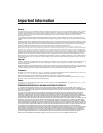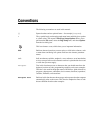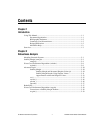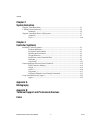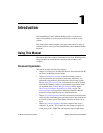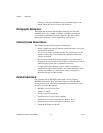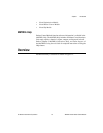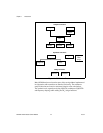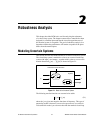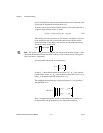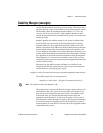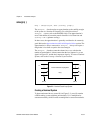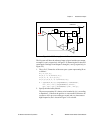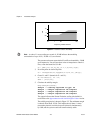Chapter 1 Introduction
MATRIXx Xmath Robust Control Module 1-2 ni.com
techniques. The general problem setup is explained together with
known limitations; the rest is left to the references.
Bibliographic References
Throughout this document, bibliographic references are cited with
bracketed entries. For example, a reference to [DoS81] corresponds
to a document published by Doyle and Stein in 1981. For a table of
bibliographic references, refer to Appendix A, Bibliography.
Commonly-Used Nomenclature
This manual uses the following general nomenclature:
• Matrix variables are generally denoted with capital letters; vectors are
represented in lowercase.
• G(s) is used to denote a transfer function of a system where s is the
Laplace variable. G(q) is used when both continuous and discrete
systems are allowed.
• H(s) is used to denote the frequency response, over some range of
frequencies of a system where s is the Laplace variable. H(q) is used to
indicate that the system can be continuous or discrete.
• A single apostrophe following a matrix variable, for example, x
'
,
denotes the transpose of that variable. An asterisk following a matrix
variable (for example, A*) indicates the complex conjugate, or
Hermitian, transpose of that variable.
Related Publications
For a complete list of MATRIXx publications, refer to Chapter 2,
MATRIXx Publications, Help, and Online Support, of the MATRIXx
Getting Started Guide. The following documents are particularly useful
for topics covered in this manual:
• MATRIXx Getting Started Guide
• Xmath User Guide
• Xmath Control Design Module
• Xmath Interactive Control Design Module
• Xmath Interactive System Identification Module, Part 1
• Xmath Interactive System Identification Module, Part 2
• Xmath Model Reduction Module





